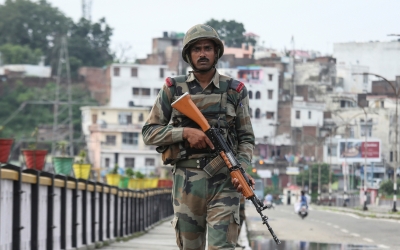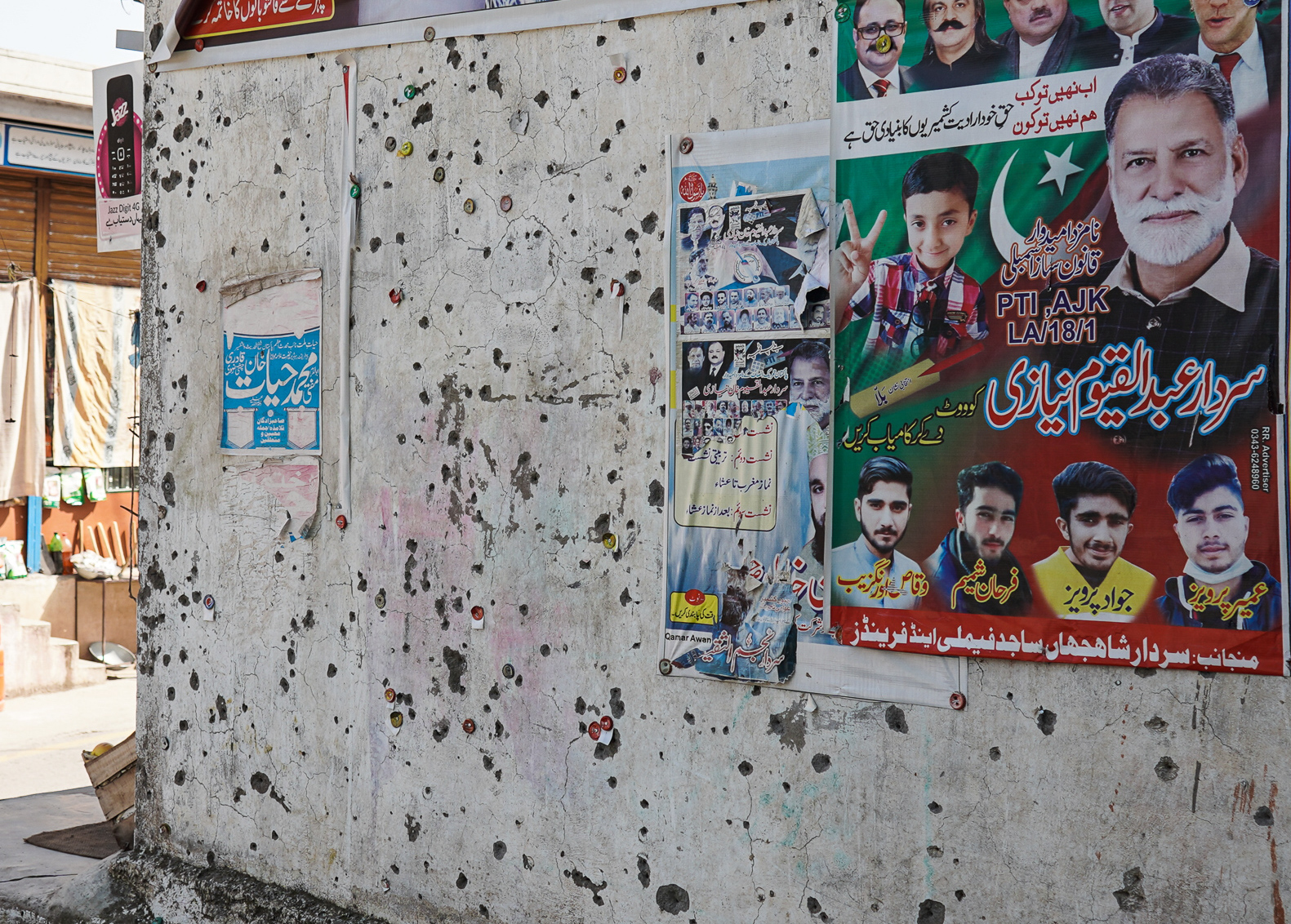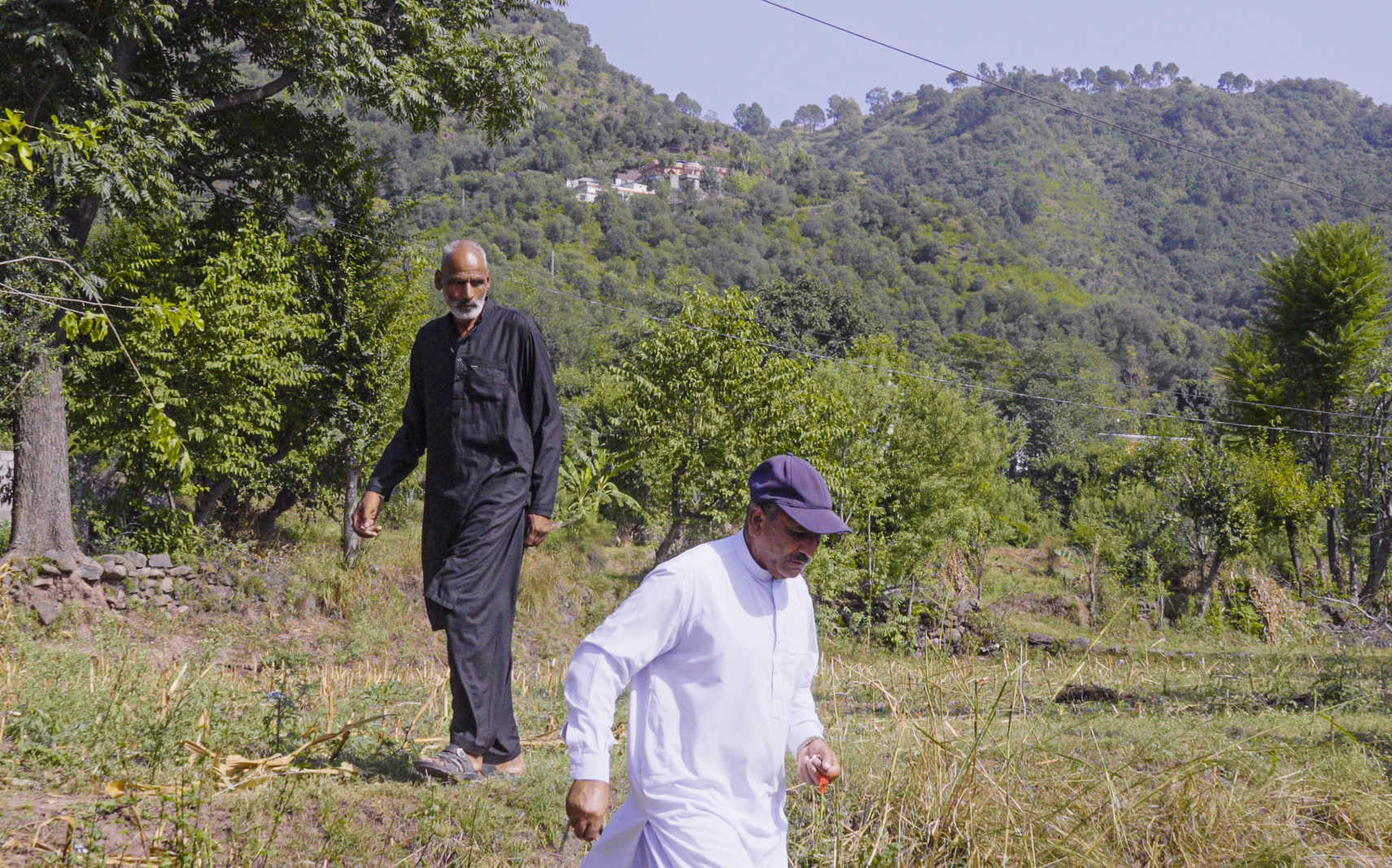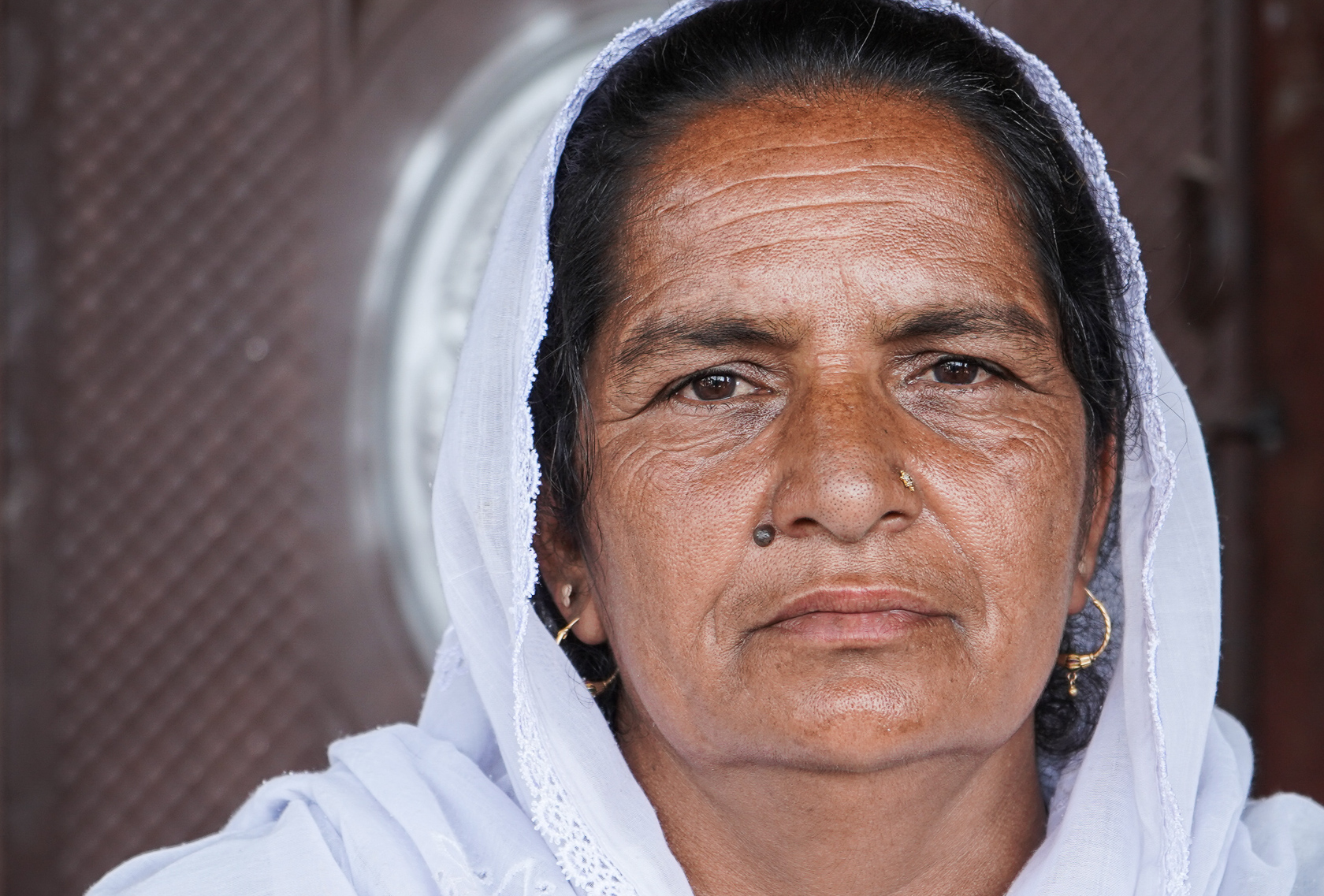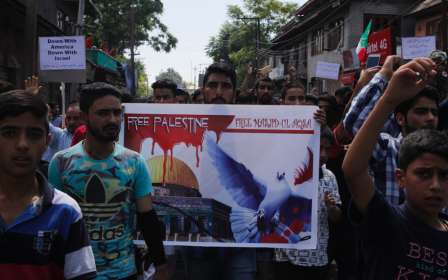Kashmir: How civilians pay the price for India-Pakistan conflict
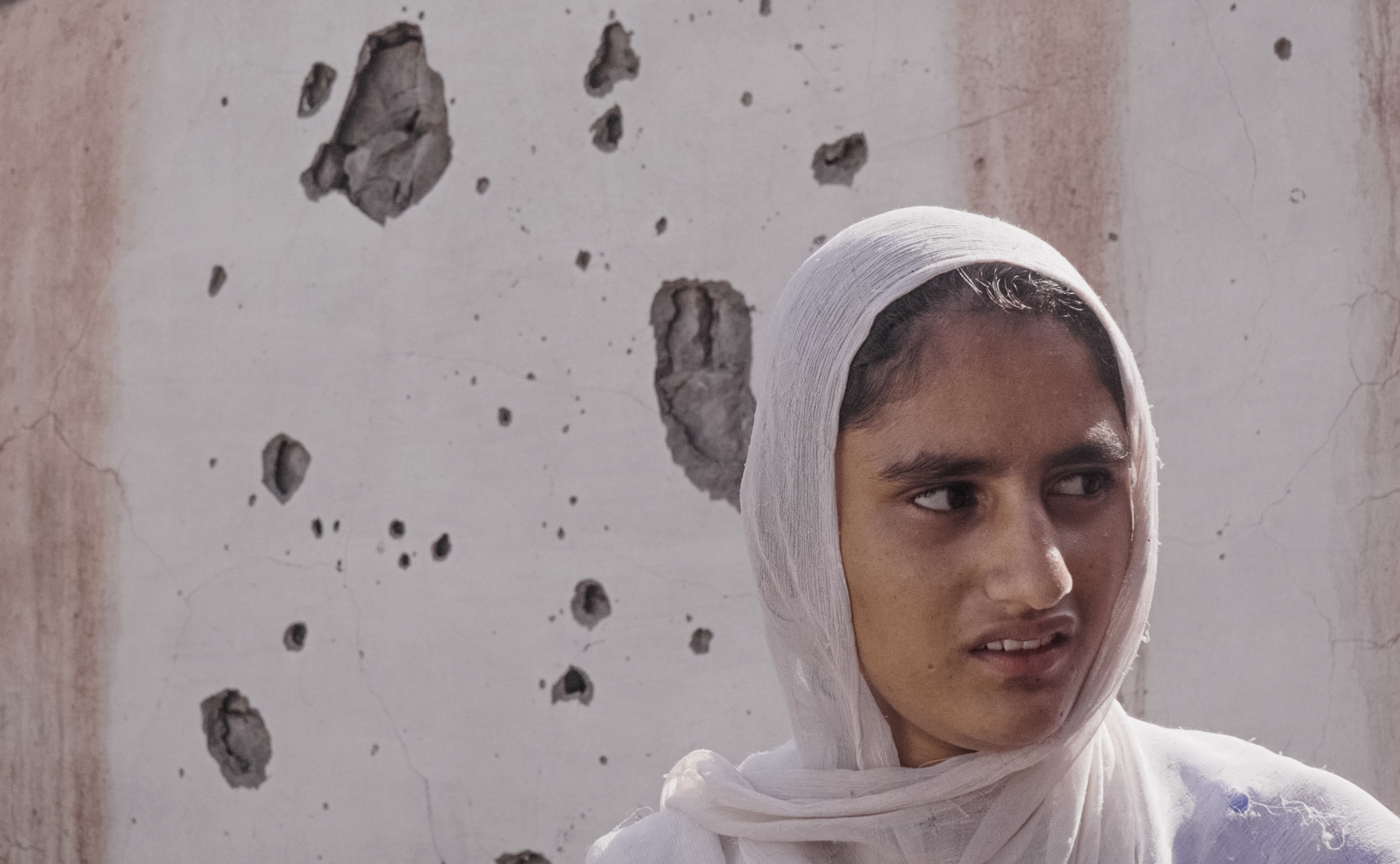
Indian atrocities against civilians in occupied Kashmir are well-enough known. Disappearances. Hundreds killed. Many more injured or blinded by pellets. Censorship. A constant, oppressive and menacing military presence.
The situation was made worse by Indian Prime Minister Narendra Modi’s decision in 2019 to cancel nearly all of Article 370 of the Indian constitution, the basis of Kashmir’s sensitive relationship with India for seven decades. Thanks to this controversial move, the limited autonomy given to Indian-controlled Kashmir - including its own flag and freedom to pass laws - was taken away.
Yet, attacks by Indian troops on Kashmiris in Pakistani-controlled Kashmir are less reported. Until a ceasefire this past February, villagers say they lived under constant fear of being shelled or fired at from Indian positions. Pakistani military sources told us that 67 civilians had died on their side of the Line of Control - the boundary dividing the parts of Kashmir controlled by India and those controlled by Pakistan - in the last five years, while 398 had been injured.
Contacted for comment, the Indian army did not respond directly to these figures, but said that Pakistani forces had caused dozens of civilian casualties on the Indian side of the line in recent years, with 22 deaths and 71 severe injuries in 2020.
We visited the Battal sector of the Line of Control with the Pakistani army, travelling in civilian vehicles to avoid attracting attention from the Indian military posts in the hills above. There, we spoke to many victims of Indian shelling, and heard their terrible stories.
Injuries and amputations
Thirteen-year-old schoolboy Omar Ajaid stepped out of his front door to fetch school books from the courtyard. A bullet hit him in the neck.
Farmer Nazeem Khan, 55, was sleeping in his garden when a bullet struck him in the hip. Abdul Aziz, 62, was also asleep in his garden when he was permanently disabled by multiple splinters from a mortar explosion.
Farmer Muhammad Sadiq, 45, was hit by an Indian bullet while grazing cattle. Shabab Dharamasal was cutting firewood when an Indian bullet smashed into his right shoulder. Nine-year-old Yasera Yasa was playing with friends when an Indian mortar exploded. His leg has been amputated.
None of the people we spoke to had done anything wrong. Their only crime was living in close proximity to the Line of Control
Gravedigger Noor Ahmad Deen, 67, was hit by a mortar splinter. The person whose grave he was digging had died from injuries from Indian fire.
Qaiser Salram lost a leg when he stepped on an anti-personnel mine that had drifted down the mountains. He had been an outstanding cricketer before, and now he insists on carrying on playing with a runner. “I am a good batsman still,” he insists.
None of the people we spoke to had done anything wrong. Their only crime was living in close proximity to the Line of Control, which was once described by former US President Bill Clinton as “the most dangerous place in the world today”. He was referring to the danger that tensions could lead to war between the two nuclear-armed powers - a risk that persists to this day.
Bunkers on the ridge
At the part of the Line of Control we visited, Indian bunkers occupy the crest of the ridge above Shahmang village, in the Battal sector. Pakistani army bunkers were metres away on the next ridge. In the words of the Pakistani army brigadier who accompanied us, the two opposing armies were “eyeball to eyeball” in these mountains.
The village itself was 2.5 kilometres away. Topography is important, helping to explain why the many injuries sustained by villagers cannot be put down to civilians caught in crossfire. We could discern no military reason for Indian soldiers to be aiming down the mountain at villagers, rather than at Pakistani soldiers on the nearby ridge.
In a statement to MEE, the Indian army denied targeting civilians, noting that soldiers were “committed to fighting terrorism and preventing infiltration attempts by terrorists from [Jammu and Kashmir] and has always exercised maximum restraint to maintain peace”.
The Indian army further alleged that Pakistani troops "have frequently resorted to use of ... gun and mortar positions from posts sited in close proximity to villages and has also moved weapons to civilian-inhabited areas to fire on our posts, thereby endangering the lives of innocent civilians”.
But according to Pakistani official sources, Pakistan has always "respected the sanctity of the Line of Control; never initiated fire on the LOC and only responds to unprovoked Indian Ceasefire Violations (CFV)." “Pakistani troops only target Indian military posts in response to their CFVs and never target the civilian population as it is against the UN Charter / International Law and secondly, because it is the Kashmiris who are living on both sides of the LOC.”
The sources added: "Since the BJP Govt came into power, there has been an unprecedented surge in Indian unprovoked CFVs: out of total 13627 CFV since 2003, 12312 CFV have been committed by the Indian army along LOC under the BJP regime alone since 2014."
While a ceasefire has been in place for months, tensions remained high during our October visit after the killing of five Indian soldiers on the Indian side of the Line of Control by suspected Kashmiri rebels the previous day. India often accuses Pakistan of supporting the rebels behind such attacks.
Several Pakistani villagers with whom we spoke told us that they believed the Indian army’s aim was to force them to leave and establish a civilian-free area
There are tens of Pakistani villages along the Line of Control. Several Pakistani villagers with whom we spoke told us that they believed the Indian army’s aim was to force them to leave and establish a civilian-free area, similar to the one on the Indian side.
Behind the Indian side of the fence were several kilometres of “anti-infiltration” measures - electronic fences, cameras, anti-personnel mines, radar, underground sensors and hand-held night-vision equipment.
“They have a very effective anti-infiltration system,” the Pakistani army officer asserted. “If they blame Pakistan for the attacks in illegally occupied Kashmir, either it’s down to the incompetence of their own troops, or the attacks are not coming from our side of the border.”
Scarred by mortars
In the village of Shahmang, buildings were scarred by mortar splinters. Witnesses told us that Indian guns and mortars had pounded local buildings, livestock and crops; part of a nearby government high school was still in ruins after taking a direct hit four years earlier.
The strike had occurred at 9:30 in the morning, but there were no classes at the time, or there would have been carnage. Teacher Hannan Gul-Zahid told us that Indian forces “target the village, target our cattle in the fields”. They “want to target us so that we leave our places”, she said, but added: “This is our motherland. We don’t want to leave.”
One pupil, Toyoba Yousaf, said she had been walking back from school to her home when a mortar exploded nearby, knocking her unconscious. We went to the spot where the mortar landed. From there, the nearest Indian and Pakistani military positions were both visible. The Indian post, on the brow of a nearby hill, was approximately 800 metres away. Lower down, we could see a Pakistani bunker.
Pakistani and Indian forces have regularly fired at each other in recent years, but the attacks on the village below were not accidental; it is clear that it was deliberately targeted.
These attacks are not one-way. India says it has closed schools and withdrawn residents from areas on its side because of Pakistani shelling. Mercifully, there have been no attacks since the ceasefire was agreed this past February between the two countries.
This has led to an unusual and badly needed period of peace and tranquillity. Villagers told us that life was returning to normal, businesses were reopening, and locals no longer had to live with constant anxiety over the possibility of a new attack.
Ceasefire relief
Robina Baig, a 50-year-old mother of two sons and four daughters, said the daily bombardments used to last three hours or more. Their livelihood was threatened as cattle were injured in the fields.
Sitting on her porch, Baig said life used to be “full of suffering because of the firing. There are two kinds of suffering: first when somebody dies, and second when somebody … suffers injuries which affect their ability to live day-to-day life.” Now, thanks to the ceasefire, “we are extremely happy and enjoying our freedom”.
Jawal, a 40-year-old shopkeeper and father of four, told us that before the ceasefire, the village attacks came at any time and could last for one to three hours. Initially, villagers would rush for cover, but the army is now constructing bomb shelters.
'They are targeting the civilian population instead of engaging the Pakistan army'
- Village elder Mohammad Riaz
Village elder Mohammad Riaz, who serves on a village defence committee that liaises with the Pakistani army, told us that Indian forces were “doing it by design. They are targeting the civilian population instead of engaging the Pakistan army. They destroy our building and infrastructure deliberately.” The purpose, he added, was to create a “wedge between the citizens and the army”.
Military sources told us that Indian attacks on civilians mainly took the form of mortars and small arms fire, adding that the Indian army “tends to do shelling where there is a Muslim majority” on both sides of the border.
The Indian army denied such allegations, saying that its forces “do not make any religious distinctions while undertaking operations. We consider people of [Jammu and Kashmir] as our own people and there is no question of deliberate targeting of Muslim-majority areas. The claims of Pakistan Army suggesting targeted shelling of Muslim majority areas is fictitious at best."
Suffering continues
Three wars have been fought over Kashmir since partition in 1947 left the Muslim-majority state divided between neighbouring India and Pakistan. The United Nations demanded a plebiscite on the future of Kashmir in 1948, but this was never implemented. Pakistan calls its own side of the Line of Control “Azad Kashmir”, which translates to “free Kashmir”, while referring to the Indian side as “occupied Kashmir”.
India rejects that term, but there is no question that Indian-controlled Kashmir, with a population of approximately 13 million, has a heavy military presence. Indian sources say they have approximately 350,000 soldiers in Kashmir, while Pakistani sources say the true number is more than twice that.
The Line of Control was established as a de facto border at the end of the 1971 war, and since then, the UN Military Observer Group in India and Pakistan (UNMOGIP) has monitored ceasefire violations.
According to official sources, Pakistan has always allowed free movement of international observers including UNMOGIP and coverage by international/domestic media along LOC with free access to the civil population whereas India has neither allowed UNMOGIP or media to visit along LOC to verify the facts. According to Pakistani official sources, there are 33 observers on the Pakistani side but only eight on the Indian side.
When we asked the Indian army about this apparent discrepancy, they did not respond directly, but noted that “India does not encourage any third-party mediation for resolution of bilateral issues”. UNMOGIP did not respond to our inquiries.
There is little question that many of those with whom we spoke were victims of war crimes. Article 8 of the Statute of the International Criminal Court states that war crimes include “intentionally directing attacks against the civilian population as such or against individual civilians not taking direct part in hostilities”.
Before we left Battal, some of the victims of the shooting and shelling - about 30 of them - formed a quiet circle outside the officers’ mess at the Pakistani brigade headquarters in Battal. Each in turn told their story; their suffering continues to this day. We asked them to lift up their trousers. Six had prosthetic limbs.
The views expressed in this article belong to the authors and do not necessarily reflect the editorial policy of Middle East Eye.
Middle East Eye propose une couverture et une analyse indépendantes et incomparables du Moyen-Orient, de l’Afrique du Nord et d’autres régions du monde. Pour en savoir plus sur la reprise de ce contenu et les frais qui s’appliquent, veuillez remplir ce formulaire [en anglais]. Pour en savoir plus sur MEE, cliquez ici [en anglais].


